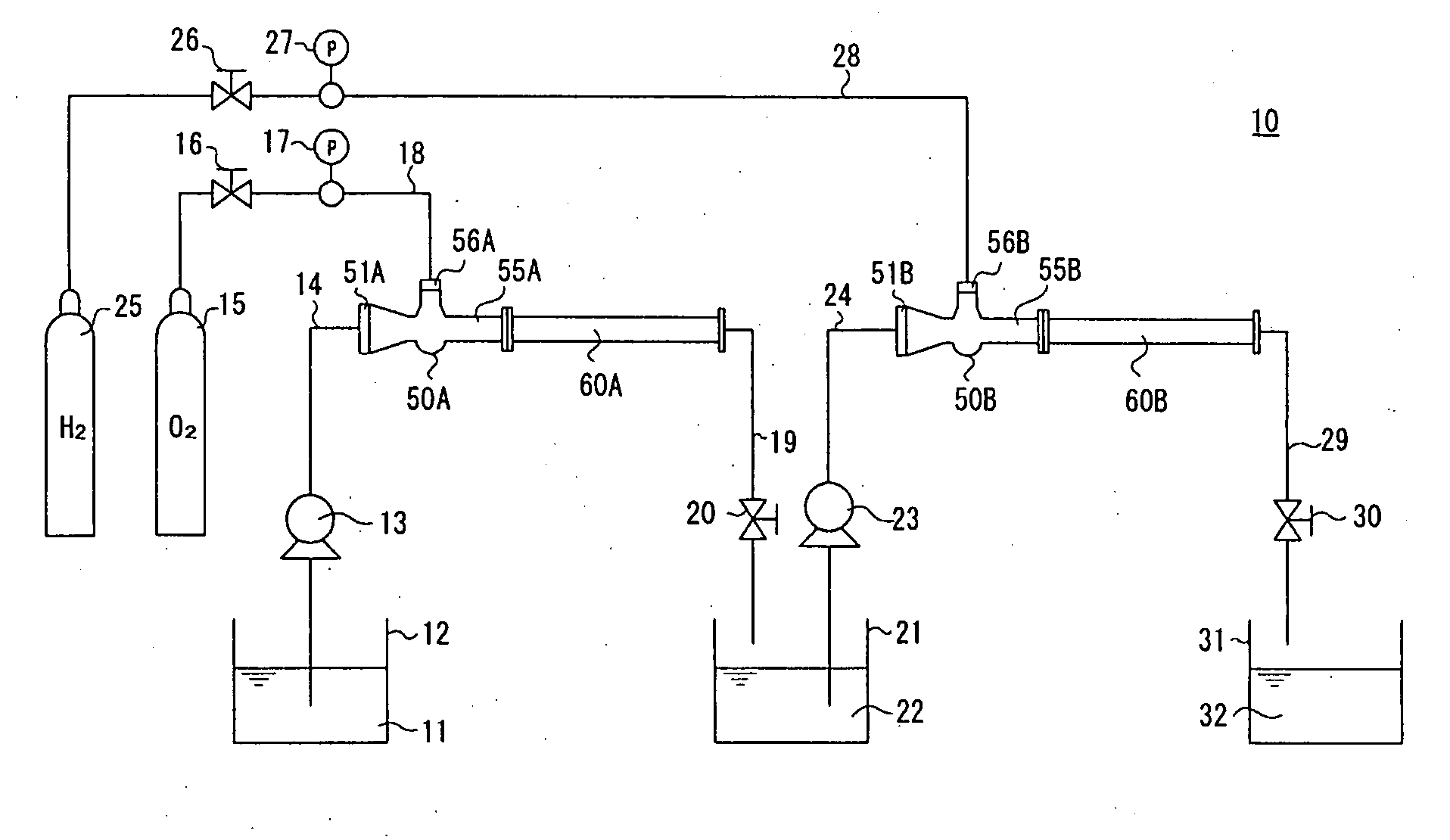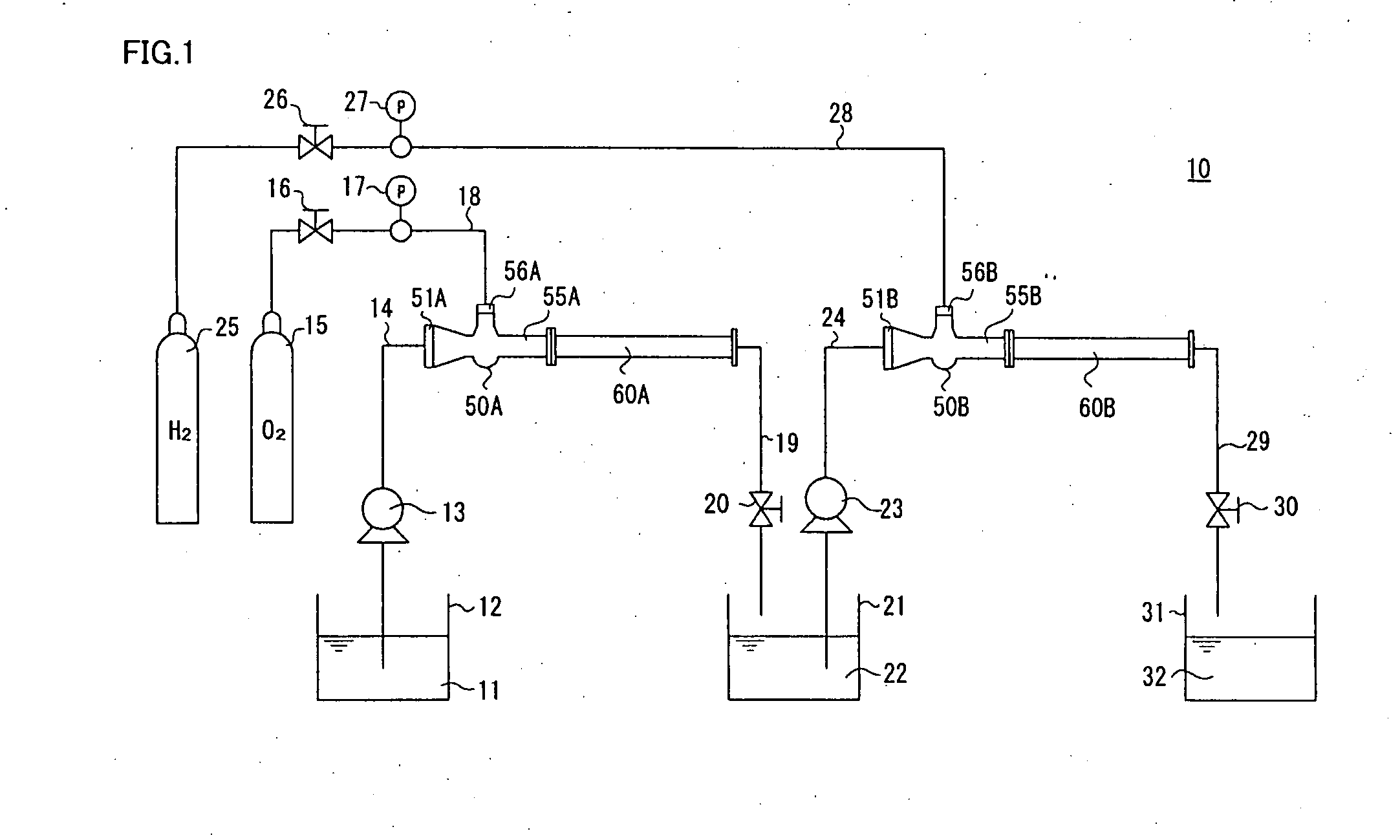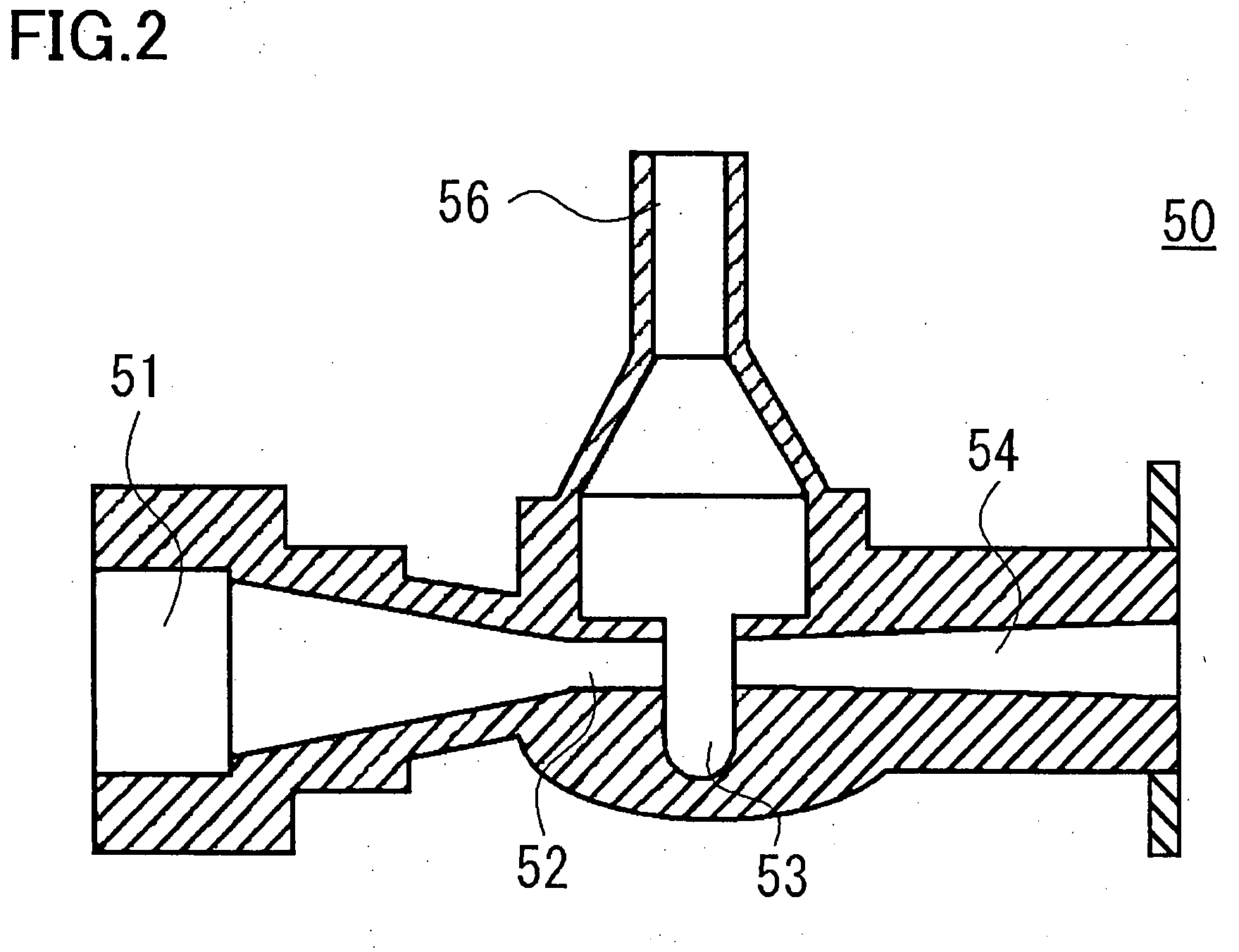Method and Apparatus for Producing Oxygen-Containing Reducing Aqueous Beverage
a technology of reducing aqueous beverages and reducing methods, which is applied in the direction of chemistry apparatus and processes, milk preservation, mixing, etc., can solve the problems of reducing the ability of the aqueous beverage, the inability to simply adopt the method of dissolving hydrogen into the aqueous beverage such as water, mineral water, and the loss of oxygen which is necessary for the human body from the aqueous beverage, and achieves low oxidation-reduction potential
- Summary
- Abstract
- Description
- Claims
- Application Information
AI Technical Summary
Benefits of technology
Problems solved by technology
Method used
Image
Examples
examples 1 to 3
[0061]In the following Examples 1 to 3, an oxygen-containing reducing aqueous beverage was produced in the following manner with use of the apparatus 10 for producing an oxygen-containing reducing aqueous beverage, which is shown in FIG. 1 and tap water (oxidation-reduction potential+420 mV, pH=7.2) available in Chuo Ward, Tokyo as raw water. Example 1 used only the ejectors 50A and 50B without using a static mixer. Example 2 used an 8-element type static mixer in combination with the ejectors used in Example 1. Example 3 used a 32-element type static mixer in combination with the ejectors used in Example 1.
[0062]Oxygen-containing reducing water was produced under the condition that the raw water flow rate, raw water pressure, oxygen-containing water flow rate, oxygen pressure, oxygen-containing water pressure and hydrogen pressure were common to all of Examples 1 to 3. Manufacturing conditions and measurement results are together shown in Table 1. Oxidation-reduction potential, oxy...
example 4
[0066]In Example 4, an oxygen-containing reducing tea beverage was produced by the oxygen-containing reducing aqueous beverage producing apparatus 10 provided with only the same first ejector 50A and second ejector 50B as in Example 1, not provided with a static mixer, and using a commercially available tea beverage as an aqueous beverage. First, oxidation-reduction potential, dissolved oxygen quantity and pH of the tea beverage were measured and found to be +60 mV, 1.55 mg / liter, and 6.1, respectively. The tea beverage and oxygen gas were fed simultaneously to the first ejector 50A at a rate of 500 ml / min under a pressure of 8 atmospheres and at a rate of 150 ml / min under a pressure of 8 atmospheres, respectively, allowing oxygen to be dissolved in the tea beverage, followed by release to normal pressure. Dissolved oxygen quantity of the oxygen-containing tea beverage obtained within the receiver 21 was measured and found to be 31.00 mg / liter.
[0067]This oxygen-containing tea bevera...
example 5
[0068]In Example 4, an oxygen-containing reducing coffee beverage was produced using a commercially available coffee beverage and in the same way as in Example 3. This coffee beverage was found to have an oxidation-reduction potential of +85 mV, a dissolved oxygen quantity of 1.22 mg / liter and a pH of 5.0. This coffee beverage and oxygen gas were fed simultaneously to the first ejector 50A at a rate of 500 ml / min under a pressure of 8 atmospheres and at a rate of 150 ml / min under a pressure of 8 atmospheres, respectively, allowing oxygen to be dissolved in the coffee beverage, followed by release to normal pressure. As a result, within the receiver 21 there was obtained an oxygen-containing coffee beverage, which was found to have a dissolved oxygen quantity of 32.70 mg / liter.
[0069]The oxygen-containing coffee beverage thus obtained and hydrogen gas were again fed simultaneously to the second ejector 50B at a rate of 500 ml / min under a pressure of 8 atmospheres and at a rate of 150 ...
PUM
 Login to View More
Login to View More Abstract
Description
Claims
Application Information
 Login to View More
Login to View More - R&D
- Intellectual Property
- Life Sciences
- Materials
- Tech Scout
- Unparalleled Data Quality
- Higher Quality Content
- 60% Fewer Hallucinations
Browse by: Latest US Patents, China's latest patents, Technical Efficacy Thesaurus, Application Domain, Technology Topic, Popular Technical Reports.
© 2025 PatSnap. All rights reserved.Legal|Privacy policy|Modern Slavery Act Transparency Statement|Sitemap|About US| Contact US: help@patsnap.com



